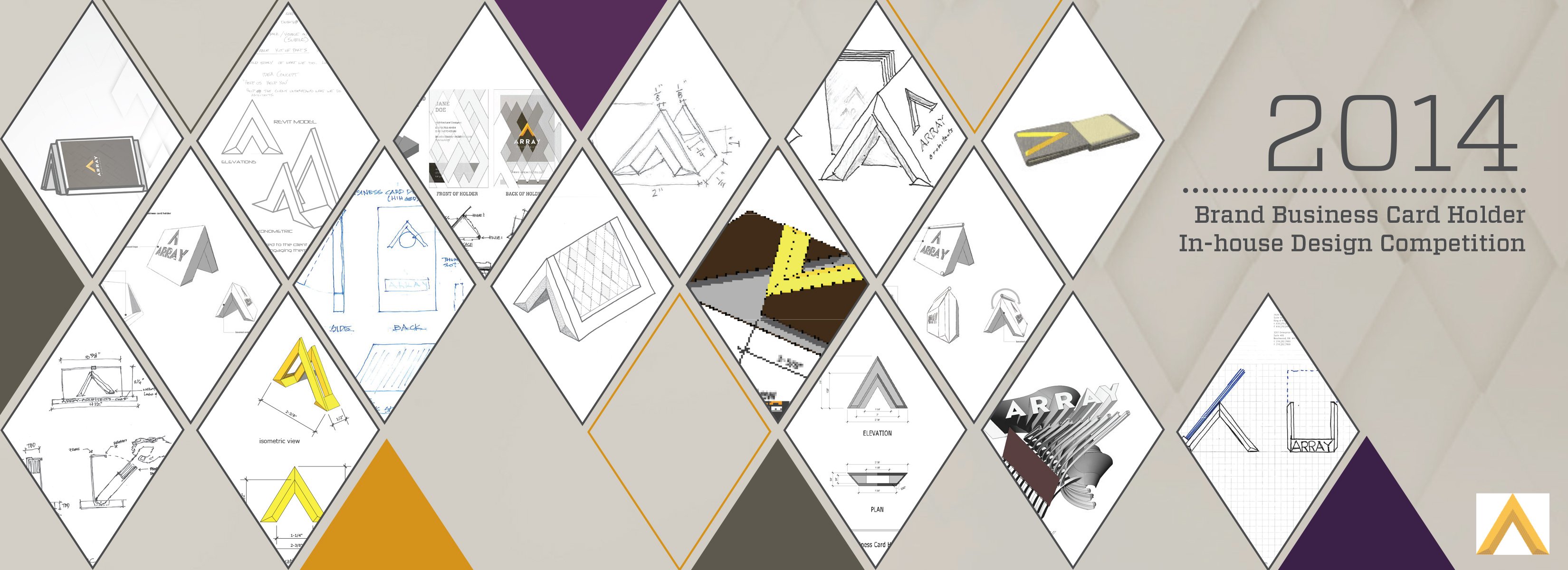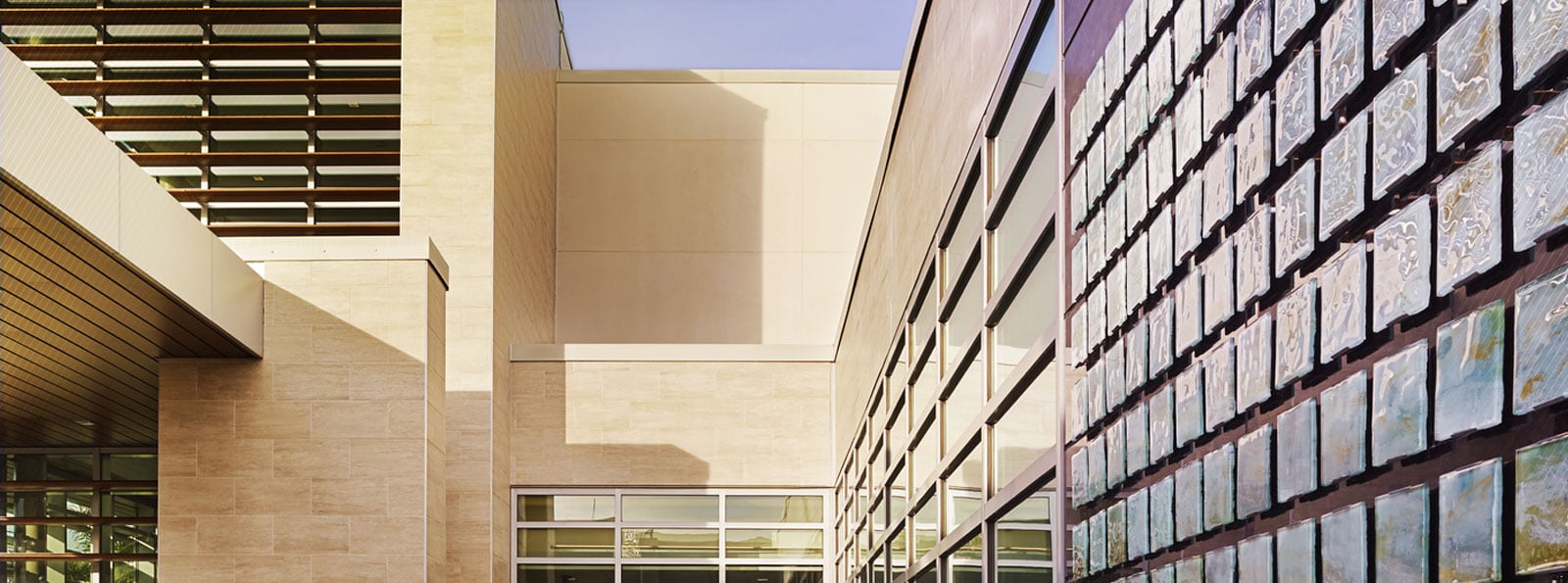To enhance Array's strong design culture and provide a forum for mentorship, the firm's practice area leaders began a 3D Design Challenge series. Staff members formally submitted design concepts for a business card holder. For this competition, our designers used sketches, their computer drawing skills and their interpretation of the Array logo to design innovative ways to display and transport business cards. Of the 16 designs submitted, six were chosen to advance to the next round where the submissions will be refined and printed on the firm's 3D printer. These prototypes will then again be judged and winners announced.
 Judges included Anthony Caputo, Patricia Malick, Kent Doss and Shane Williams - all principals in the firm. Some comments from the first round of critiques include:
Judges included Anthony Caputo, Patricia Malick, Kent Doss and Shane Williams - all principals in the firm. Some comments from the first round of critiques include:
"Communicated effectively"
"Explored brand detail, really thought about how to use the 3D material in a unique way. It’s a transformer; can go from desk to pocket."
"Holder becomes a carrier with a thumb cut out. Clean elegance. Can be constructed in a few 3D parts."
"Money clip aspect was really interesting, open at the top reveals some information without taking the card out. Using the inherent plastic qualities as part of the design."
"This one took risks, it could be a huge failure and that is something we want to explore."
"Can stand on its own with or without business cards."
Over the next three weeks, designers and mentors will meet, in person and using Array's SMART technology, to dive into the models, discussing best practices for finalizing the drawings to print most effectively on the 3D printer. Each team or individual selected to move onto Phase II was challenged to look beyond their initial concept. They will explore, test and evolve their ideas, pushing them to the next level. To develop this idea, designers will begin to think of their project as something that can be produced on a 3D printer. They’ll be encouraged to think about their idea as a product, object and fabrication. It is quite possible that the final solutions have multiple construction techniques associated with them; the 3D printer being only the creation’s foundation.
The main tool for this exploration is a Makerbot Replicator 2, which has a maximum build volume of 11.2” x 6” x 6.1”. The Makerbot can both print a single object at this maximized dimension, or multiple objects at the same time, so long as they fit within this dimension. The Replicator 2 is a PLA Filament printer. For the purposes of this exploration, 4 spools of color have been provided to the designers to further enhance their designs.
Designers will have the opportunity to make multiple test models over the three weeks. The purpose of this process is to be able to learn from experimentation, refine modeling / fabrication process and send revisions to the printer.
(Part II of blog will reveal winners and the chance to view the finished products.)
Blog written by Tony Caputo, former designer with Array Architects.

